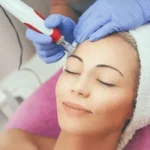Injectable aesthetics reviews. 20 Questions That Patients Ask Before Botox Treatment

While Botox injections have become a normal way to treat aging skin, it is important for patients to know what they are getting into. Patients should always consult their doctor and do their research before any medical procedure. The below list of 20 common questions patients have regarding Botox and their answers is a good place to start.
1. What is Botox used for?
Botox is used to reduce lines and wrinkles on the face by relaxing the facial muscles. Wrinkles and lines are often caused by repetitive facial expressions. Relaxing the facial muscles prevents these expressions and results in fewer wrinkles and lines on the face.
2. Where does it work best?
Botox works best on the horizontal surprise lines on the forehead, frown lines (vertical lines between the eyebrows), crow’s feet (fan-shaped lines extending from the outer corner of each eye), smile lines (lines that extend from the nose to the corners of the mouth), and smoker’s lines (vertical lines around the lips).
3. What is getting Botox like?
Common concerns patients have include the amount of pain from the injections and the amount of swelling of the face after treatment. When performed by a professional, Botox injections rarely cause bleeding and are relatively painless. Oftentimes, the pinch of the injection ends before the pain is even registered. Some slight puffiness is to be expected immediately following the procedure.
4. Do the injections hurt?
Any injection can hurt but choosing a skilled doctor can help to minimize pain. The needles used for Botox injections are very small, so pain is minimal or even non-existent. In addition, topical anesthetic creams or cold packs may be applied to reduce pain.
5. How long does it take to work?
Botox results do not appear instantly. It can take 5 to 7 days before patients start to see a reduction in the appearance of wrinkles and other facial lines. Maximum results appear after 2 weeks.
6. How long does it last?
The effects of Botox last for about 3 months. As its effects start to wear off and the facial muscles begin to move freely again, lines and wrinkles start to reappear. To maintain a line-free look, Botox injections need to be administered several times each year.
7. If I’m getting Botox for a special event, when should I book my treatment?
Botox appointments should be booked 2 to 3 weeks before a big event, since that is how long it takes to see the full effects of the treatment. Some redness, swelling, and tenderness may occur in the first seven days after treatment, but these effects subside quickly. Patients can expect a line-free look by the second or third week.
8. What is the best age for Botox treatments?
This depends upon the patient’s sun exposure, lifestyle, and skin color. In general, patients start to receive Botox is between the ages of 35 and 40. Regardless, younger patients are now starting to look to Botox as a preventative treatment.
9. What happens to the botulinum toxin once it’s in the body?
Once botulinum toxin enters the body through Botox injections, it may migrate up to 3cm from the injection site. When botulinum toxin remains in its intended position, it blocks the nerve endings, thus relaxing the affected facial muscles. However, even if some molecules were to enter the bloodstream, the cosmetic dose (<100 units) is too low to cause systemic toxic effects, and the molecules would be quickly broken down into harmless amino acids.
10. Who can get Botox? Is it only for celebrities and older people?
Like any other medical procedure, there are side effects and eligibility factors that patients should discuss with their physician prior to treatment. Some factors that may prevent a person from receiving Botox treatment include pregnancy, breastfeeding, botulism, myasthenia gravis, and double or blurred vision.
11. Can Botox be used in combination with other treatments for better results?
Botox and dermal fillers are commonly used together. When these two treatments are combined, their results can last for as long as a year, whereas the results of Botox alone last for a maximum of 6 months. Botox relaxes the facial muscles and fillers add volume, resulting in smoother skin.
12. Who can give Botox injections?
A Botox treatment is a medical procedure and must be performed by a qualified medical doctor. This treatment may also be performed by a fully trained nurse under the on-site supervision of a medical doctor. Botox treatment should always be performed in a proper medical facility.
13. How can I be certain that what I’m getting is actually Botox?
It can be very difficult to distinguish real Botox from counterfeit Botox. This is why it is important for patients to have confidence in their medical practitioner. Board-certified dermatologists and plastic surgeons would never risk their reputation by using fake Botox. In addition, always check the bottle and its box to ensure the Botox injection is sealed and fresh.
14. Are there any medical side effects?
If properly injected, the side effects of Botox are minimal. Common side effects include muscle weakness, bruising, bleeding, pain, redness, and swelling at or near the injection site. Headache, neck or back pain, muscle stiffness, dizziness, drowsiness and lethargy can also result from Botox treatment. Others side effects include flu-like symptoms such as fever, cough, sore throat, and runny nose. It is also possible to have an allergic reaction to Botox.
15. Does Botox have unwanted cosmetic side effects?
The most severe side effects include permanent disfiguration and loss of facial muscle functionality due to paralysis of the facial nerve. Less severe side effects include drooping of the brows and upper eyelid, partial or slight paralysis of the face, swelling of the eyelids, eyes pointing upward or downward instead of straight ahead, and skin rash. Patients should consult their physician for more information about the possible side effects of Botox treatment.
16. Are there alternatives to Botox?
Although Botox is considered to be the best anti-wrinkle treatment on the market, there are other botulinum toxins available. Dysport medications and Myobloc (Neurobloc) are injectables that work similarly to Botox. Other treatments include facial creams and chemical peels, which have received positive reviews for their anti-aging effects. As well, cosmetic injectable are also extremely effective. However, none of these treatments are permanent.
17. What is the difference between Botox and dermal fillers?
Botox is a neurotoxin that reduces the activity of the facial muscles that cause wrinkling. Dermal fillers fill the affected areas with a substance such as hyaluronic acid, which is naturally found in the skin. This not only plumps the skin but also lifts and tightens it.
18. What are some common myths about Botox?
1. Myth: Botox has immediate effects.
Fact: The effects of Botox are seen after 2 weeks.
2. Myth: Botox is made from pure botulinum toxin.
Fact: Botox is made from a protein derivative and is relatively harmless.
3. Myth: People who exercise a lot need more Botox.
Fact: A person’s workout routine does not affect the amount of Botox required.
19. How much does Botox cost?
On average, the cost of Botox treatment ranges from $350 to $500 for each treated area. In terms of cost per unit of Botox, the price ranges from $9 to $20 per unit. Special discounts or offers may be available to make this treatment more affordable.
20. What happens on the day of Botox treatment?
The doctor providing the treatment will make a series of injections in the desired areas of the patient’s face. The patient can then return to regular activities, but should follow aftercare methods given by their doctor until any adverse effects have subsided.
Related Articles
How Do You Store Your Botox? You May Just be Doing it Wrong.
Aug 30, 2017 -YourBotoxand other botulinum toxins may be safer left at room temperature than you think. Learn the range of storage conditions these drugs tolerate…
Do Botox Injections Make it Hard to Understand Emotions?
May 25, 2017 -Learn howBotoxor other botulinum toxin injections can affect mental health, making it harder for recipients to understand the emotions of others…
Disclaimer: The contents of this article are not to be constructed as medical advise but for informational purposes only. MedicaDepot staff does not review any of this articles for medical validity. Opinions and views expressed in this article are not endorsed by MedicaDepot. Please always consult your doctor for professional medical advise.
Injectable aesthetics reviews can be found on various platforms, including specialized aesthetic treatment review websites, social media platforms, and healthcare provider directories. They provide valuable insights for individuals considering these treatments, offering firsthand perspectives and experiences that can help inform decisions about undergoing injectable aesthetic procedures. Here are some key points typically covered in injectable aesthetics reviews:
-
Treatment Effectiveness: Reviewers often discuss how effective the injectable treatment was in achieving their desired aesthetic goals, such as reducing wrinkles, enhancing facial contours, or improving skin texture.
-
Safety and Comfort: Reviews may address the safety of the procedure, including any discomfort experienced during or after the injection process, as well as any side effects or complications encountered.
-
Provider Experience: Reviewers may comment on their experience with the healthcare provider administering the injectable treatment, including their professionalism, expertise, and ability to address concerns or questions.
-
Results Duration: Discussions often include the longevity of the results achieved with the injectable aesthetics, such as how long the effects lasted before additional treatments were needed.
-
Overall Satisfaction: Reviewers typically summarize their overall satisfaction with the injectable aesthetics treatment, considering factors like the improvement in their appearance, confidence level, and value for money.





